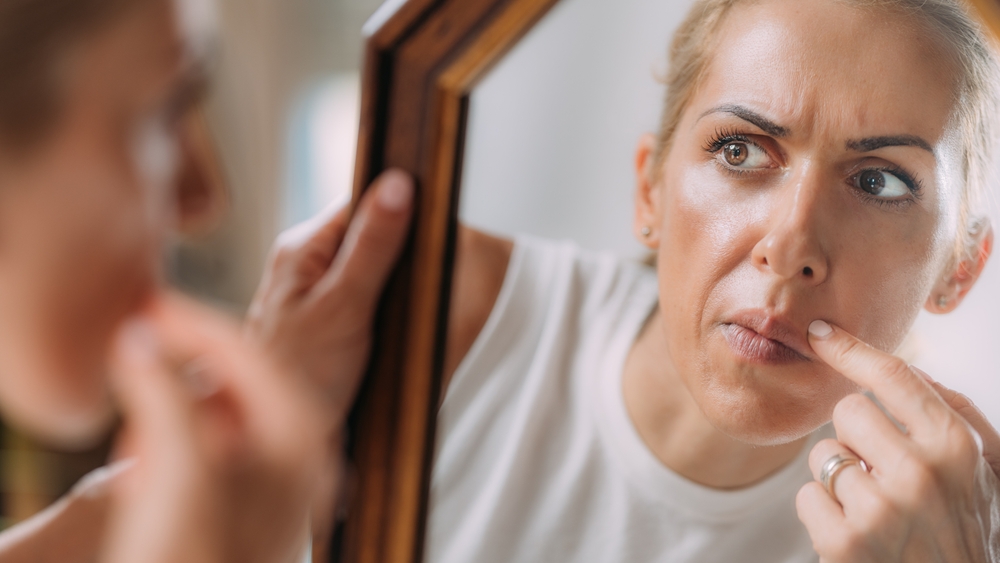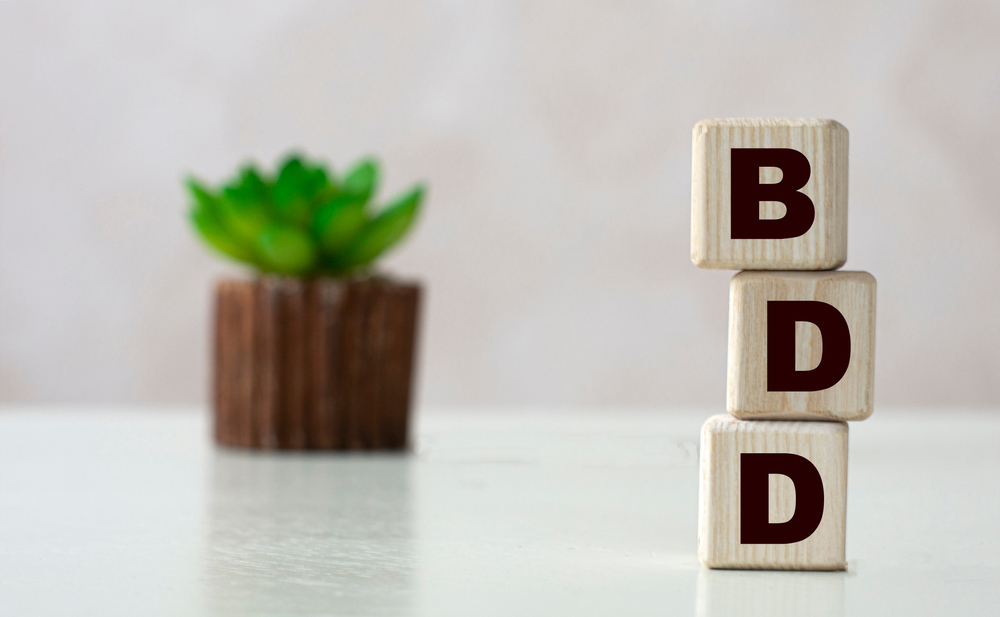Last Updated:
July 21st, 2025
BDD and Addiction | Symptoms and Support Options
What is BDD?
BDD (Body Dysmorphic Disorder) is a mental health condition where a person becomes fixated on perceived flaws in their appearance, even if others do not notice them. This obsession can lead to constant mirror-checking, seeking reassurance or avoiding social situations out of fear of judgment.
BDD isn’t about vanity but a deep sense of distress that can take over daily life. Many people with BDD experience anxiety or depression and some pursue cosmetic procedures in hopes of feeling better, though this rarely brings relief.

How common is BDD?
BDD is estimated to affect approximately 2% of the adult population, equating to around 1 in 50 people. In the UK, this translates to roughly 1,100,000 individuals living with the condition. However, experts believe this figure is underestimated due to the stigma surrounding BDD, which often leads individuals to suffer in silence rather than seek professional help.
Many people with BDD feel deep shame and embarrassment about their perceived flaws, making them reluctant to discuss their concerns. Additionally, misdiagnosis is common, as symptoms can overlap with conditions like OCD, anxiety or depression, meaning many individuals may not receive an accurate diagnosis.
What are the signs of BDD?
Recognising the signs of BDD in yourself or someone close to you is important. Many people with BDD struggle to see that their concerns about their appearance are excessive, making it difficult to seek help. Understanding the behavioural and psychological signs can help identify when BDD may be affecting daily life.
Behavioural signs of BDD
Frequent mirror checking or complete avoidance
Some people spend long periods scrutinising their appearance in mirrors, searching for flaws. Others do the opposite and avoid mirrors entirely to prevent distress.
Excessive grooming or camouflaging
This includes spending hours applying makeup, styling hair or choosing clothes specifically to hide a perceived flaw. Some might use scarves, hats or certain poses in photos to conceal areas of concern.
Constantly seeking reassurance
Repeatedly asking others if they look okay or if their flaw is noticeable is common. While reassurance may provide temporary relief, the anxiety usually returns.
Comparing appearance to others
Many people with BDD fixate on how they look in comparison to others, often believing they fall short. Social media and edited images can worsen this habit.
Avoiding social situations
Some may withdraw from social events, work or even basic activities like shopping due to fear of judgment. This can lead to isolation and impact relationships.
Psychological signs of BDD
Obsessive thoughts about appearance
A person with BDD may spend hours thinking about their perceived flaw, making it difficult to concentrate on work, studies or conversations.
Intense distress or anxiety about looks
Even minor imperfections can cause overwhelming shame, disgust or anxiety, often affecting self-confidence and daily routines.
Distorted self-perception
People with BDD often see themselves very differently from how others see them. They may believe they look abnormal or unattractive, despite reassurances.
Low mood and feelings of hopelessness
Constant distress over appearance can lead to feelings of depression, low self-worth and, in some cases, suicidal thoughts.
Perfectionism and unrealistic beauty standards
Many set unattainable goals for their appearance, believing they can only be happy or accepted if they achieve a certain look. These expectations can lead to ongoing dissatisfaction.
The link between BDD and addiction
BDD and addiction often go hand in hand, with research showing that people with BDD are significantly more likely to develop substance use disorders than those without the condition. This connection is largely driven by the intense emotional distress that BDD causes. When someone feels trapped in an obsessive cycle of self-criticism and dissatisfaction with their appearance, substances can feel like a way to cope.
For some, drugs or alcohol provide a temporary escape from the overwhelming preoccupation with perceived flaws. Stimulants, for example, might be used in an attempt to lose weight, while alcohol or sedatives might help numb the distress that comes with BDD-related anxiety.
Unfortunately, these short-term coping mechanisms can quickly turn into long-term dependencies, deepening both the addiction and the mental health struggles.
Another key factor is impulsivity. People with BDD often show a tendency toward risky or rash decisions, which can make them more vulnerable to substance use. This impulsivity, paired with the ongoing emotional pain, creates a perfect storm where addiction becomes a way to self-medicate rather than a conscious choice.
What is a dual diagnosis of BDD and addiction?
A dual diagnosis of BDD and addiction means that both conditions are present at the same time, often influencing and worsening each other.
People with BDD may turn to substances to cope with obsessive thoughts about their appearance, while addiction can intensify feelings of distress and self-criticism.
Identifying both conditions is crucial because treating only one may leave the other unaddressed, increasing the risk of relapse. A combined approach ensures that underlying emotional struggles are managed alongside addiction, helping individuals develop healthier coping mechanisms and achieve long-term recovery.

BDD and addiction treatment options
While there may not always be a rehab programme specifically designed for BDD, many addiction treatments also offer valuable support for those struggling with BDD. Addressing both conditions together can lead to better outcomes, as underlying emotional challenges often contribute to addictive behaviours.
Counselling
Counselling plays a crucial role in addressing the root causes of addiction and BDD. Both individual and group therapy sessions provide a safe space to explore thoughts and emotions.
Dialectical Behaviour Therapy (DBT) is particularly effective in helping individuals regulate emotions and develop healthier coping strategies. These therapeutic approaches ensure that support is tailored to individual needs.
Holistic therapies
Holistic therapies such as yoga and meditation can support overall well-being by improving self-awareness and emotional resilience. These practices complement traditional therapies, helping individuals reconnect with themselves in a positive way. Integrating holistic methods alongside counselling can be beneficial in managing both addiction and BDD.
Continued aftercare
Aftercare is essential for long-term recovery, providing continued guidance and support after initial treatment. Group therapy fosters a sense of community, offering encouragement and shared experiences that reinforce coping mechanisms.
Ongoing aftercare helps individuals navigate post-treatment challenges and maintain progress in both addiction recovery and managing BDD.
What are the next steps?
If body dysmorphic disorder and addiction are taking over your life, you don’t have to face it alone. Our team at Addiction Helper is here to guide you toward the right support, whether that’s therapy, rehab or expert advice. Call us today for confidential help and start your journey toward recovery.
Our compassionate team are ready and available to take your call, and guide you towards lasting the lasting addiction recovery you deserve.
Frequently Asked Questions
(Click here to see works cited)
- “BDD Statistics.” BDDF, bddfoundation.org/information/statistics/. Accessed 19 March. 2025.
- Grant JE, Lust K, Chamberlain SR. Body dysmorphic disorder and its relationship to sexuality, impulsivity, and addiction. Psychiatry Res. 2019 Mar;273:260-265. doi: 10.1016/j.psychres.2019.01.036. Epub 2019 Jan 11. PMID: 30658211; PMCID: PMC6420059.

